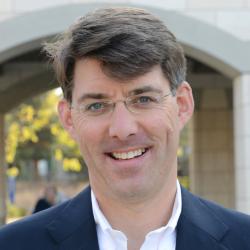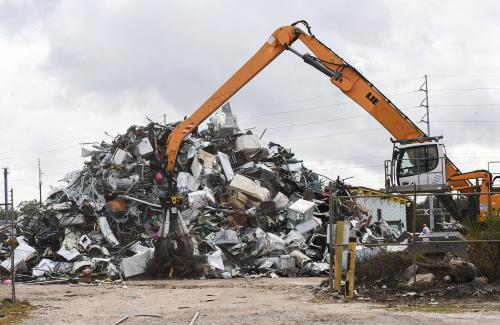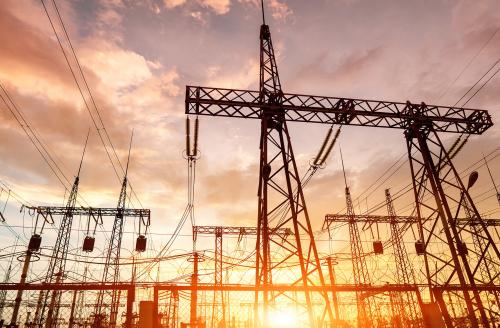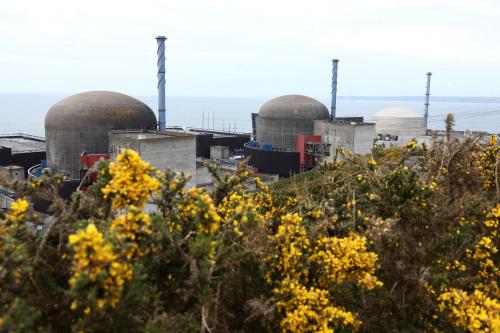The recent power blackouts in Texas have raised serious questions about the state’s energy grid and how it is regulated. Jeffrey Ball joins David Dollar in this episode to explain what exactly went wrong and how policy decisions contributed to the crisis.
Ball is a scholar-in-residence at Stanford’s Steyer-Taylor Center for Energy Policy and Finance where his research focuses on energy and the environment. He clarifies how renewable energy sources performed during February’s storm and their role in Texas’s energy sector. Ball and Dollar then turn to discuss economically efficient ways to decarbonize the U.S. power industry and the need for global cooperation to combat climate change.
Related content:
The Texas Blackout Is the Story of a Disaster Foretold
DAVID R. DOLLAR: Hi, I’m David Dollar, host of the Brookings trade podcast, “Dollar and Sense.” Today, my guest is Jeff Ball, a scholar at the Stanford Center for Energy Policy and a nonresident senior fellow here at Brookings in the Energy, Security, and Climate Initiative.
We are going to start by talking about the immediate energy news—the failure of the power grid in Texas—and then move on to larger issues of transforming the power system and carbon reduction. So welcome to the show, Jeff.
JEFFREY BALL: David, it’s really nice to be here. Thanks for the invitation.
DOLLAR: So, let’s start with the catastrophe in Texas. Why did the power system fail so spectacularly?
BALL: I guess, in two words, it failed spectacularly both because of Texas’s policy and because of Mother Nature’s cold. So, let’s try to unpack that. There were some policy choices that Texas made over the years that were very different from choices that other jurisdictions made, and those choices set the stage for deep physical vulnerability that we saw play out in February in a really dangerous way for residents of one of the biggest states in this country.
Many years ago, Texas very intentionally set a policy designed to minimize the regulation of its electricity market. Ostensibly, that was to promote competition, and thereby to reduce prices that consumers pay for electricity. But it also must be said it was designed to maximize profits for energy producers. One result of that is that Texas, unlike other places, has what the energy geeks call an “energy only” market rather than what the energy geeks call a “capacity market.” Here’s what that means: In many other states and in many other countries, power producers are paid not just for selling electricity, but also for investing in extra power plant capacity that they can turn on in the event of a shortage; It’s essentially an insurance policy. Texas intentionally decided to design its system not to do that, because doing that almost certainly would have added to costs. So, the result of that is that when the power went out in Texas, there was very little extra to call on.
There were two physical outgrowths of that policy decision that played out in really horrific fashion in Texas. One is that Texas’s grid is physically cut off from other power grids to a much greater extent than is the case elsewhere in the United States and in most countries. It’s not absolutely an island, but it’s more an island than other grids are. What that meant when the cold snap happened in February is that Texas was less able to call on other places—to import power—than it might have been had it had a grid that had more connections.
The second, and really, I think, hugely consequential physical result of all this, is that Texas did not require energy producers in its state to winterize their facilities. It didn’t require power plant operators to do that, and it didn’t require the operators of natural gas production to do that. Several times in the past—I mean, everyone thinks of Texas as a really warm place, but it actually can get quite cold in the winter, and there have been a couple of cases in the past where it has gotten really frigid in Texas in the winter. And there have been similar things to what happened this February happening. There have been blackouts and freezing down of the natural gas infrastructure. There was a very famous example of this 10 years ago, almost literally 10 years ago in February 2011. There were a bunch of experts from the federal level who came in and basically told Texas, “you should force power plant and natural gas production operators to winterize their facilities.” Well, Texas decided not to do that, and the chickens came home to roost this February.
DOLLAR: One of the eye-popping headlines that caught my attention was some poor household that got a 16,000-dollar power bill. How did that happen?
BALL: The free market, that’s how that happened. I mean, as part of Texas’s unabashedly, proudly, laissez faire approach to energy, the market goes where the market goes. Texas’s system allows prices to go very, very high in times of high demand on the theory, as a free-market economist would endorse, that high prices mitigate themselves because they change demand and the prices come back down. So, that is a free-market economist’s dream. It’s also a very expensive proposition for Texas energy consumers.
Now, there are, as we speak, hearings going on in Texas, in the legislature, where people are screaming and yelling and trying to blame people and figure out whom to blame. And I think it’s fair to say that one question they are going to be asking is will people and companies that got bills like that indeed have to pay them or will there be some relief? But bottom line, this is a consequence of a very intentionally designed free market energy system.
DOLLAR: So, you mentioned that the Texas grid is somewhat isolated. By not being part of a larger system, Texas avoids federal regulation. Nearby states like Oklahoma and New Mexico had similar weather. Did they get better experiences? Does this help us understand the particularities of the Texas situation?
BALL: It does. And they didn’t get better weather, they just withstood the weather better. What’s so interesting, David, at least to my mind, is that it’s not just states that border Texas that did better than Texas. It’s actually edges of Texas that did better than the center of Texas. This gets into a little bit of electricity grid wonkery, but let’s give it a shot. I think it’s actually quite interesting.
We have been talking here about Texas having gotten walloped by the storm in February and Texas as a whole having lost a lot of electricity. In fact, it was a particular grid. It’s called the ERCOT grid. ERCOT stands for the Electric Reliability Council of Texas. It is the power grid—the system of wires—that serve together about 90 percent of Texas. It’s most of the state, but it’s not all of the state, and specifically it’s not the western edge of the state around El Paso and it’s not the eastern edge of the state around Beaumont. If you look at who lost power in Texas, the people around El Paso and around Beaumont didn’t lose power. They are on different energy grids than the ERCOT grid, just like the people in New Mexico and Oklahoma are on different grids.
So, again, what this shows is that this pattern of deregulation, this decision not to compel winterization, had discernible effects in a geographically constrained area where those decisions played out. Essentially right next door, even within the boundaries of the same state, the outcome was different because the policies were different, not because the weather was markedly different. So, it just goes to show how policy that sounds wonky and esoteric has incredibly important human impacts.





Commentary
PodcastThe Texas fiasco and the global push for green energy
March 1, 2021